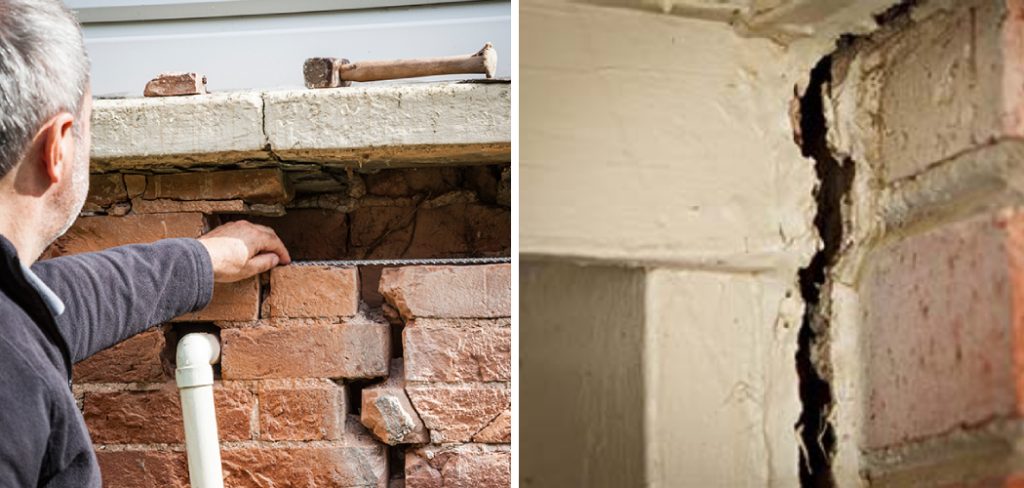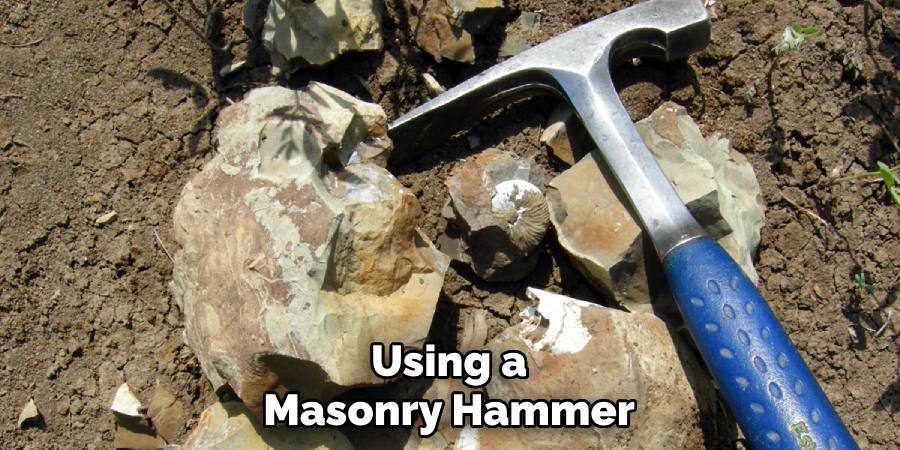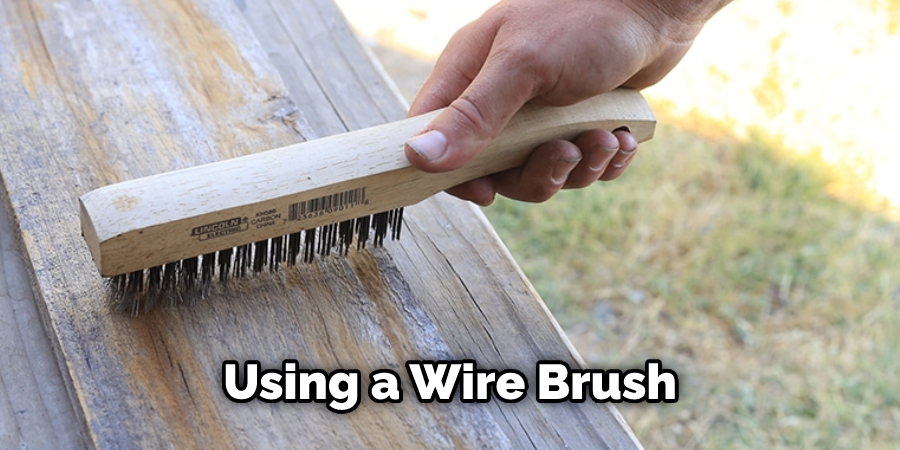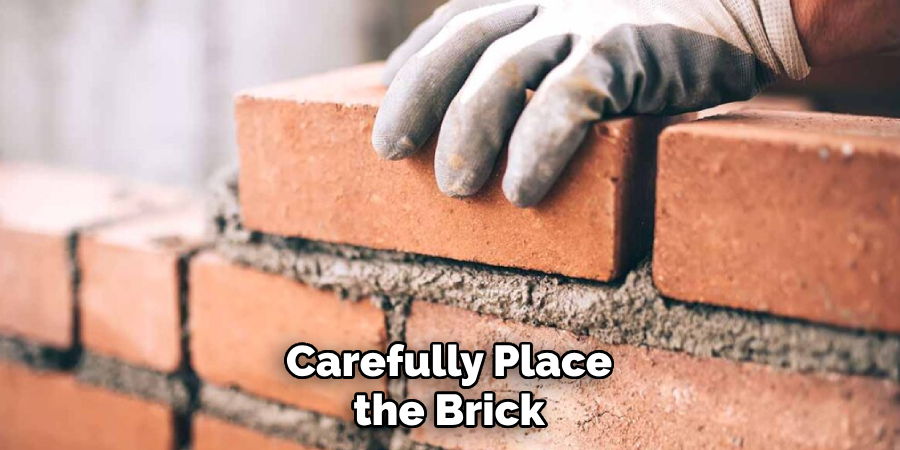Are you in the throws of home renovation and need help with repairing a separating brick wall? With the right set of tools, proper safety precautions, and an understanding of how to manage bricks and mortar, you can successfully tackle this project yourself.

In this blog post, we’ll provide detailed instructions on how to repair separating brick wall like a pro while saving tons in repairs. So grab your tool belt and let’s get started!
Tools and Materials You Will Need to Repair Separating Brick Wall
1. Masonry hammer
2. Cold chisel
3. Mortar mix
4. Trowel
5. Joint raker
6. Brick jointer
7. Wire brush
8. Safety goggles
9. Work gloves
Step-by-step Guidelines on How to Repair Separating Brick Walls
Step 1: Inspect the Wall
Before beginning any repairs, thoroughly inspect the wall to identify any structural issues or damage. Look for cracks, loose bricks, and bulging areas. This will help you determine if the wall needs minor repairs or a more extensive restoration. If you notice any significant damage, it’s best to consult a professional.
Step 2: Prep the Work Area
Ensure that the area around your brick wall is clear and free of debris. Cover nearby plants and outdoor furniture with plastic sheeting to protect them from dust and debris. Preparing your work area will make the repair process easier and more efficient. If the wall is indoors, cover the floor and furniture with drop cloths. Make sure to also wear safety goggles and work gloves to protect yourself while working.
Step 3: Remove Damaged Bricks
Using a masonry hammer and cold chisel, carefully remove any cracked or damaged bricks from the wall. Be sure to wear safety goggles and work gloves for protection. If you encounter stubborn pieces of brick, use a wire brush to loosen them before removing them entirely. While removing bricks, take note of any loose or missing mortar in the joints. If needed, use a joint raker to remove any old mortar from the joints.

Step 4: Prepare Mortar Mix
Mix the mortar according to package instructions. Be sure to wear a dust mask while handling the dry mix. Add water slowly and continue mixing until you reach a smooth and pliable consistency that will hold its shape when formed into a ball. While preparing the mortar, keep it covered with a damp cloth to prevent it from drying out.
Step 5: Apply Mortar to Joints
Using a trowel, apply an even layer of mortar into the joints left by the removed bricks. Be sure to only fill about half of the joint’s depth to allow room for the new brick. Use a joint raker to smooth out the mortar and create a concave finish. This will help with water runoff and keep your wall looking clean. Applying mortar to the joints is crucial for providing strength and stability to the wall.

Step 6: Place New Bricks
Carefully place the new bricks into the joints, pressing them firmly into the mortar. Use a brick jointer to create a uniform finish between each brick. If needed, use a level to ensure that each brick is straight and aligned with the rest of the wall. Continue this process until all damaged bricks have been replaced.
Step 7: Allow Mortar to Dry
Once all new bricks have been placed, allow the mortar to dry completely before touching or applying any pressure to the wall. Check the package instructions for specific drying times, but typically it can take up to 24 hours for mortar to fully set and harden. Make sure to protect the wall from any disturbance during this time.
Step 8: Clean Up
Once the mortar has dried, remove any excess or smudged mortar using a wire brush. If needed, use a damp cloth to wipe down the wall and achieve a clean finish. This step will also help reveal any small imperfections that may need touch-up. Make sure to also clean up any debris and tools from your work area.
Following these steps and taking your time to properly repair a separating brick wall can save you time, money, and headaches in the long run. Remember to always wear proper safety gear, work cautiously, and consult a professional if needed for more extensive repairs. With this knowledge, you can confidently tackle any separating brick wall issue that comes your way. Happy renovating!

Additional Tips and Tricks to Repair Separating Brick Walls
1. When selecting the type of mortar to use for repairing a separating brick wall, make sure to consider the climate and weather conditions of your area. A mortar that is suitable for dry climates may not work well in areas with high humidity levels.
2. Before starting any repair work, it is important to thoroughly clean the area where the bricks are separating. Use a wire brush or pressure washer to remove any loose debris, dirt, and old mortar.
3. To ensure a strong bond between the bricks and the new mortar, dampen the brick surface with water before applying the mortar. This will prevent the bricks from absorbing too much moisture from the fresh mortar and weaken its strength.
4. It is recommended to use a trowel or pointing tool specifically designed for brickwork when applying mortar. This will make it easier to fill in the gaps between the bricks and create a smooth finish.
5. When repairing a large area of separating bricks, work in small sections at a time rather than trying to do everything at once. This will ensure that the mortar stays wet enough to properly adhere to the bricks.
6. For best results, use a mortar mix that is specifically designed for brickwork repairs. These mixes are usually pre-mixed and may contain additives to improve bonding, strength, and flexibility.

7. After filling in the gaps with new mortar, use a pointing tool or your finger to smooth out the surface and create a neat finish. This will also help to push the mortar into any remaining voids and ensure a stronger bond.
8. If the bricks are severely damaged or cracked, it may be necessary to replace them instead of just repairing the separating wall. In this case, make sure to use bricks that are similar in size and color to maintain a cohesive look.
9. Once the repair work is completed, cover the newly repaired area with plastic sheeting or damp cloths and keep it moist for at least 24 hours. This will allow the mortar to properly cure and prevent it from drying out too quickly.
10. Regularly inspect your brick wall for any signs of separation or damage, especially after extreme weather conditions. Promptly addressing any issues can prevent them from becoming bigger problems in the future.
Following these tips and tricks can help you effectively repair a separating brick wall, ensuring its longevity and stability. Remember to prioritize safety while performing any repairs and consult a professional if needed. With proper maintenance and care, your brick wall will continue to stand strong for many years to come.
Things You Should Consider to Repair Separating Brick Wall
1. The first thing you should consider when repairing a separating brick wall is the cause of the separation. Understanding why the bricks have separated will help you determine what steps need to be taken to properly repair the wall and prevent further separation.
2. One common cause of separating brick walls is moisture. If water seeps into the bricks, it can weaken them and cause them to separate over time. In this case, repairing the wall may involve fixing any sources of water leakage and possibly replacing damaged bricks.
3. Another possible cause of separating brick walls is structural issues with the building’s foundation or structure. If the foundation has shifted or settled, it can cause the bricks to separate. In this situation, it may be necessary to consult a professional contractor to assess and repair the foundation before addressing the separating bricks.
4. It’s also important to consider the age and condition of the bricks themselves. If they are old and deteriorating, it may be necessary to replace them entirely rather than attempting to repair them.
5. Before beginning any repairs, make sure you have all the necessary tools and materials on hand. This may include a hammer, chisel, trowel, mortar mix, and replacement bricks if needed.
6. When repairing the separating bricks, start by removing any loose or damaged bricks using a hammer and chisel. Be careful not to damage any surrounding bricks in the process.
7. Once the damaged bricks have been removed, use a trowel to apply a layer of mortar to both the back of the brick and the area where it will be placed on the wall.
8. Carefully place the brick back into its original position, making sure it is level and aligned with the surrounding bricks. Use a trowel to smooth out any excess mortar around the edges. This will help create a strong bond between the bricks and prevent future separation.

Following these considerations and steps should help you successfully repair a separating brick wall. However, if the separation is significant or there are underlying structural issues, it may be best to consult a professional for assistance. Remember to always prioritize safety and take necessary precautions when working on any home repairs. So, it’s important to understand the cause of the separation before attempting to repair the wall.
Precautions Need to Be Followed for Repairing Separating Brick Wall
1. First and foremost, you need to ensure your safety before starting the repair process. Wear gloves, safety goggles, mask, and other protective gear.
2. In case of any major structural damage or severe cracking, it is highly recommended to seek professional help instead of attempting the repair yourself.
3. Before starting the repair work, make sure you have all the necessary tools and materials on hand.
4. Clean the area thoroughly before starting the repair process, as any dust or debris can affect the adhesion of new mortar to the bricks.
5. It is important to identify and address the root cause of the separating brick wall before starting the repair work. This could be due to moisture issues, poor construction, or other underlying problems.
6. It is recommended to work on a small section at a time, rather than trying to repair the entire wall at once. This will ensure better control and accuracy in the repair process.
7. Use appropriate mortar mix for brick walls, as using the wrong type of mortar can lead to further damage.
8. While repairing, make sure to remove any loose or damaged bricks and replace them with new ones. This will ensure a strong and stable structure.
Following these precautions will not only ensure a successful repair process but also help prevent any potential hazards or accidents. It is always best to be cautious and take necessary safety measures while working on repairing separating brick walls.
Conclusion
Now you know how to repair separating brick wall, it’s important to remember that prevention is always better than cure. Regularly inspect your walls for any signs of separation and address them immediately before they become too severe. Additionally, make sure you use quality materials and proper techniques when building or repairing brick walls.
Furthermore, understanding the underlying causes of separating brick walls can help prevent future issues from occurring.
Factors such as soil movement, poor construction practices, and water damage can all contribute to wall separation. By addressing these issues early on and implementing proper maintenance measures, you can prolong the life of your brick walls.
